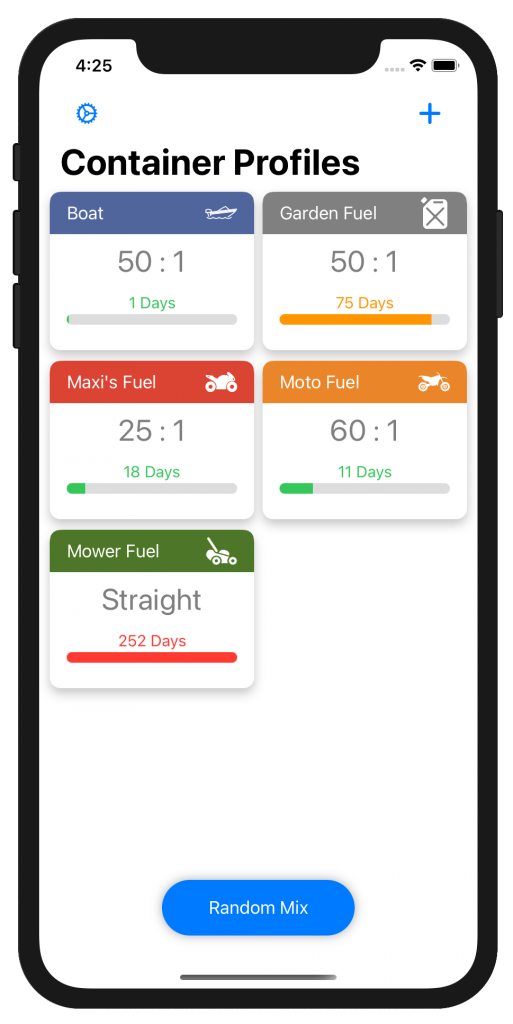32:1 Fuel Mix Chart – 2-Stroke Oil to Gas Ratio Guide
If your 2-stroke engine calls for a 32:1 fuel mix, it’s critical to get the ratio right. Engines that require this richer oil blend are often older models or designed to run under more demanding conditions. This page explains the 32:1 premix ratio and provides handy reference charts for both U.S. and metric measurements.
What Is a 32:1 Fuel Mix?
A 32:1 ratio means 32 parts gasoline to 1 part two-stroke oil. This mix contains more oil than 40:1 or 50:1, offering extra lubrication—especially important for older engines with looser tolerances or those running in extreme conditions.
For example:
- 1 gallon of gas (128 oz) mixed with 4 oz of oil gives you a 32:1 ratio.
- 1 litre of gas needs 31 millilitres of oil.
This mix is ideal for preventing wear, overheating, and piston scuffing in engines that demand more oil.
Why Use a 32:1 Fuel Mix?
This ratio is commonly recommended for:
- Older 2-stroke engines
- High-performance racing engines
- Tools or machines under heavy load
- Air-cooled engines that run hot
Using the right oil ratio:
- Prevents premature wear and engine damage
- Ensures smooth operation under high stress
- Complies with many manufacturers’ original specs
To make it easier you can use the following old school reference chart.
Metric (Litres:Millilitres)
| Fuel (L) | Oil (mL) |
|---|---|
| 1 | 31 |
| 2 | 63 |
| 3 | 94 |
| 4 | 125 |
| 5 | 156 |
| 7.5 | 234 |
| 10 | 313 |
| 15 | 469 |
| 20 | 625 |
| 25 | 781 |
US (Gallons:Fluid Ounces)
| Fuel (gal) | Oil (fl oz) |
|---|---|
| 1 | 4 |
| 1.5 | 6 |
| 2 | 8 |
| 2.5 | 10 |
| 3 | 12 |
| 4 | 16 |
| 5 | 20 |
| 7.5 | 30 |
| 10 | 40 |
| 15 | 60 |
How to Mix 32:1 Gas and Oil Properly
- Use an approved fuel container—never mix in your engine’s tank.
- Measure oil exactly using a dedicated measuring cup or bottle.
- Pour the oil inot the container first, then add fuel and shake well.
- Label your container with the ratio and date for easy reference.
Tip: Mix only as much fuel as you’ll use in 30–60 days to keep it fresh and avoid carburetor problems.
What Engines Use a 32:1 Mix?
- Vintage chainsaws (e.g., older Homelite, McCulloch models)
- Older leaf blowers and hedge trimmers
- Classic 2-stroke motorcycles and dirt bikes
- Early model outboard motors
- Racing engines running under extreme conditions
Always consult your owner’s manual or engine label before mixing.
2 Stroke Mix App
If you’re looking for something to help with other ratios and remind you how old your fuel is, please take a look at our app for iPhone and Apple Watch on the App Store?
FAQ – 32:1 Ratio Explained
Q: What happens if I use too little oil?
A: Running lean (not enough oil) can cause engine seizure, scuffing, and permanent damage, always consult your manual for the correct mix ratio.
Q: Can I use 32:1 in a 40:1 engine?
A: Yes, using a slightly richer mix in a 40:1-rated engine usually won’t hurt. You may notice more smoke, but it adds protection. Don’t go leaner than recommended.
Q: Does synthetic 2-stroke oil work for 32:1?
A: Absolutely. High-quality synthetic 2-stroke oils provide excellent protection and burn cleaner, even at richer ratios.
Q: Can I store leftover premix from last season?
A: It’s not recommended. Old premix can lead to gum and varnish buildup in your carburetor or cause poor performance. If fuel smells sour or cloudy, dispose of it properly and mix a fresh batch.

